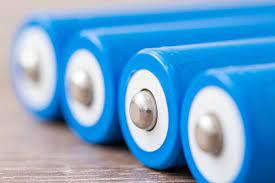Silicon Anode Battery Market Progress Driven by Strategic Partnerships and Scalable Manufacturing Solutions

The silicon anode battery market is undergoing significant transformation as advancements in energy storage technology drive innovation, investment, and competition. With the limitations of traditional graphite anodes becoming increasingly apparent, the demand for silicon-based alternatives has grown due to their higher energy density, better performance, and potential to meet the needs of electric vehicles (EVs), consumer electronics, and grid storage systems. This article explores the key developments shaping the silicon anode battery market, including technological breakthroughs, major players, industry challenges, and future outlook.
Rising Demand Driven by Energy Density and Performance
Silicon anodes offer a theoretical energy capacity nearly ten times greater than graphite anodes, making them a highly attractive option for next-generation lithium-ion batteries. This increased capacity translates to longer-lasting batteries, faster charging times, and lighter-weight designs — critical improvements for EVs and portable electronics. As the global transition to electric mobility accelerates, battery manufacturers are increasingly focused on enhancing battery performance while reducing costs, making silicon anodes a promising solution.
The shift from graphite to silicon has not been without challenges. Silicon's tendency to expand and contract during charge-discharge cycles causes mechanical stress, leading to electrode degradation and reduced battery lifespan. However, recent innovations have made substantial progress in mitigating these issues.
Technological Advancements and Material Innovations
Several companies and research institutions have developed new composite materials and nanoengineering techniques to stabilize silicon and improve its performance in batteries. Techniques such as coating silicon particles with elastic polymers, using silicon oxides, or blending silicon with graphite have helped overcome the expansion-related limitations.
Startups like Sila Nanotechnologies and Enevate have developed proprietary silicon-dominant anode technologies that claim to significantly outperform traditional batteries. Sila, for instance, has partnered with companies like Mercedes-Benz and Panasonic to bring its anodes to market. Their silicon anode materials reportedly offer a 20–40% increase in energy density over conventional lithium-ion cells.
Meanwhile, academic researchers have been working on scalable production techniques and environmentally friendly materials to ensure these advanced batteries can meet global demand. Nanostructured silicon, silicon nanotubes, and silicon-carbon composites are some of the most promising directions.
Investment and Strategic Partnerships
The growing potential of silicon anodes has attracted substantial investment. Venture capital funding in battery innovation surged in the last few years, with a significant portion flowing to silicon anode startups. Major automotive OEMs and battery producers have formed partnerships with technology companies to accelerate commercialization. For instance, BMW has announced a collaboration with Group14 Technologies to integrate silicon anodes into future EV batteries.
Additionally, battery giants such as Samsung SDI and LG Energy Solution are investing in silicon technology to stay competitive. The market is also witnessing an increase in licensing agreements, joint ventures, and long-term supply deals, as companies position themselves to meet the rapidly growing demand for EVs and energy storage solutions.
Market Challenges and Scalability Concerns
Despite the promising progress, several challenges remain. The cost of producing high-quality silicon materials is still relatively high compared to graphite. Furthermore, ensuring the mechanical and chemical stability of silicon anodes over hundreds or thousands of cycles is essential for commercial viability.
Another key issue is scalability. While lab-scale results are promising, producing silicon-based batteries at industrial scale without sacrificing performance or cost-effectiveness is a critical hurdle. Manufacturers need to optimize production lines and establish reliable supply chains for raw materials, including silicon, binders, and electrolytes that support silicon’s properties.
Environmental sustainability is also under scrutiny. The extraction and processing of silicon, especially in nanoparticle form, can have ecological impacts. Companies are increasingly exploring more sustainable synthesis methods and closed-loop recycling systems to minimize environmental harm.
Future Outlook and Market Projections
Looking ahead, the silicon anode battery market is expected to grow rapidly over the next decade. Analysts project a compound annual growth rate (CAGR) of over 30% for silicon anode-based lithium-ion batteries, driven by EV adoption and rising energy storage needs. By the early 2030s, silicon anodes could become mainstream in commercial battery applications, provided current technical and economic hurdles are addressed.
The transition to silicon anodes will not happen overnight, but the trajectory is clear. With sustained investment, strategic partnerships, and ongoing research, silicon anode batteries are poised to play a crucial role in the next generation of energy storage systems.
- Art
- Causes
- Crafts
- Dance
- Drinks
- Film
- Fitness
- Food
- Jogos
- Gardening
- Health
- Início
- Literature
- Music
- Networking
- Outro
- Party
- Religion
- Shopping
- Sports
- Theater
- Wellness
- Politics
- IT
- Relationship
- Blockchain
- NFT
- Crypto
- Fintech
- Automobile
- Faith
- Family
- Animals
- Travel
- Pets
- Coding
- Comedy
- Movie
- Jogo
- Computer



